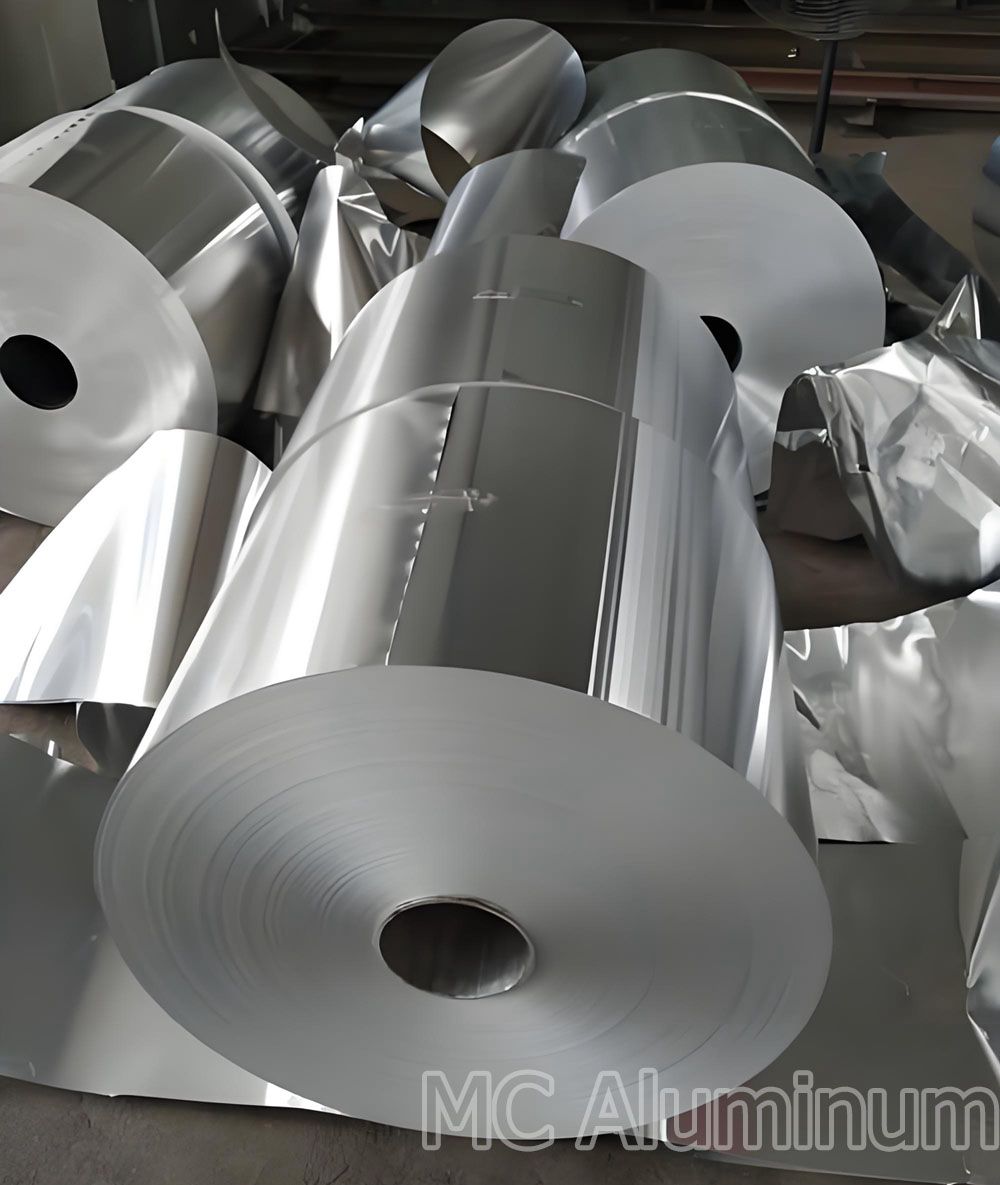Among the materials commonly used in HVAC (Heating, Ventilation, and Air Conditioning) systems, rigid aluminum foil has emerged as a leading solution. Known for its high strength, excellent thermal conductivity, and superior corrosion resistance, rigid aluminum foil is the ideal material for air ducts, insulation panels, and composite boards.
What is Rigid Aluminum Foil?
Rigid aluminum foil refers to aluminum foil that has not undergone softening (annealing) treatment after rolling. It is specifically designed for applications that require durability, heat resistance, and dimensional stability.
Unlike the flexible foil used in packaging, rigid foil can retain its shape under stress, making it ideal for structural and insulation applications.
Compared to soft foil, hard-tempered aluminum foil features higher bursting and heat-sealing strength but lower ductility and flexibility, with a stiffer texture that is easier to tear.
Common alloys used for HVAC aluminum foil include 1060, 1100, 8011, 3003, and 3102, with typical thicknesses ranging from 0.08mm to 0.25mm and widths between 200mm and 1200mm.
Manufacturing Process of Rigid Aluminum Foil
The production of rigid aluminum foil generally involves the following steps:
Cold rolling the hot-rolled or cast-rolled slab to a thickness of 0.3-4mm.
Intermediate annealing in a furnace at 300-450°C for 2-30 hours.
Further cold rolling to 0.15-0.5mm to produce the foil stock.
Final foil rolling to 0.006-0.1mm thickness.
Unlike soft foil, rigid foil is not annealed after the final rolling. The finished foil is then wound into coils, maintaining its hard temper and rigidity.
Applications of Rigid Aluminum Foil in HVAC
Rigid aluminum foil plays a vital role in various HVAC components, including:
(1) Air Ducts and Air Distribution Systems
Rigid foil is often used as a liner or as part of the duct structure.
Its smooth inner surface reduces airflow resistance and prevents corrosion, while its reflective surface minimizes heat loss or gain, improving overall thermal efficiency.
(2) Insulation and Composite Panels
When laminated with fiberglass, foam, or kraft paper, rigid aluminum foil forms durable insulation panels widely used in walls, ceilings, and HVAC unit casings.
These panels reduce heat transfer and help maintain indoor temperature stability, improving energy efficiency.
(3) Thermal Insulation and Vapor Barriers
Rigid foil acts as an excellent vapor barrier in HVAC systems.
It prevents moisture infiltration, protects insulation materials from mold growth, and reflects radiant heat to enhance system performance.
(4) Sound Insulation
When combined with sound-absorbing materials, aluminum foil helps reduce noise from air handling units, fans, and ductwork - ensuring quieter HVAC operation in both residential and commercial spaces.

Specifications of Rigid Aluminum Foil
| Alloy | 1100, 1350, 8011 |
| Temper | H14, H16, or customized |
| Thickness | 0.05mm - 0.5mm |
| Width | 500mm - 1500mm |
| Length | Customizable |
| Surface Finish | Mill finish, bright, kraft paper laminated, or PE coated |
| Mechanical Strength | High tensile and yield strength ensuring rigidity |
| Applications | Air duct lining, insulation board, vapor barrier |
MOQ | 1-3 tons |
Advantages of Using Rigid Aluminum Foil in HVAC Systems
1. Excellent Thermal Conductivity
With a thermal conductivity of approximately 235 W/m·K, aluminum ensures efficient heat transfer in duct liners and heat exchangers.
This accelerates cooling and heating cycles, improving overall system efficiency and reducing energy consumption.
2. Lightweight and Strong
Compared to steel or other metals, aluminum is lightweight, lowering installation costs and building load.
Despite its light weight, rigid aluminum foil maintains mechanical strength, resisting bending, denting, or deformation during handling and installation.
3. Corrosion and Moisture Resistance
Aluminum naturally forms a protective oxide layer that prevents corrosion.
In HVAC applications, this layer ensures long service life, even in humid environments, minimizing maintenance costs and extending equipment lifespan.
4. Easy Fabrication and Installation
Rigid aluminum foil can be cut, bent, or laminated to fit custom HVAC designs.
It is compatible with insulation materials such as fiberglass, foam boards, and kraft paper, making it ideal for producing high-performance composite insulation panels.
5. Energy Efficiency
By reflecting radiant heat and acting as a vapor barrier, rigid aluminum foil reduces thermal losses in ducts and insulation boards.
This contributes to lower energy bills and supports sustainable building operations.
